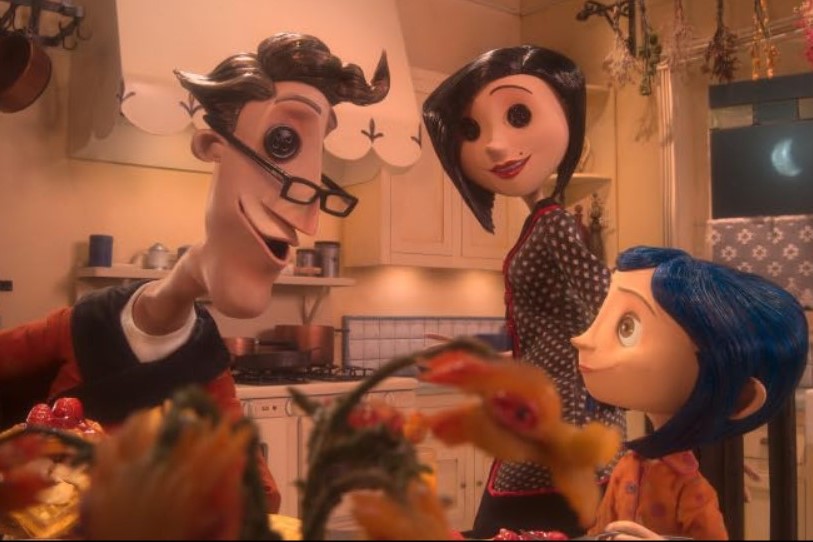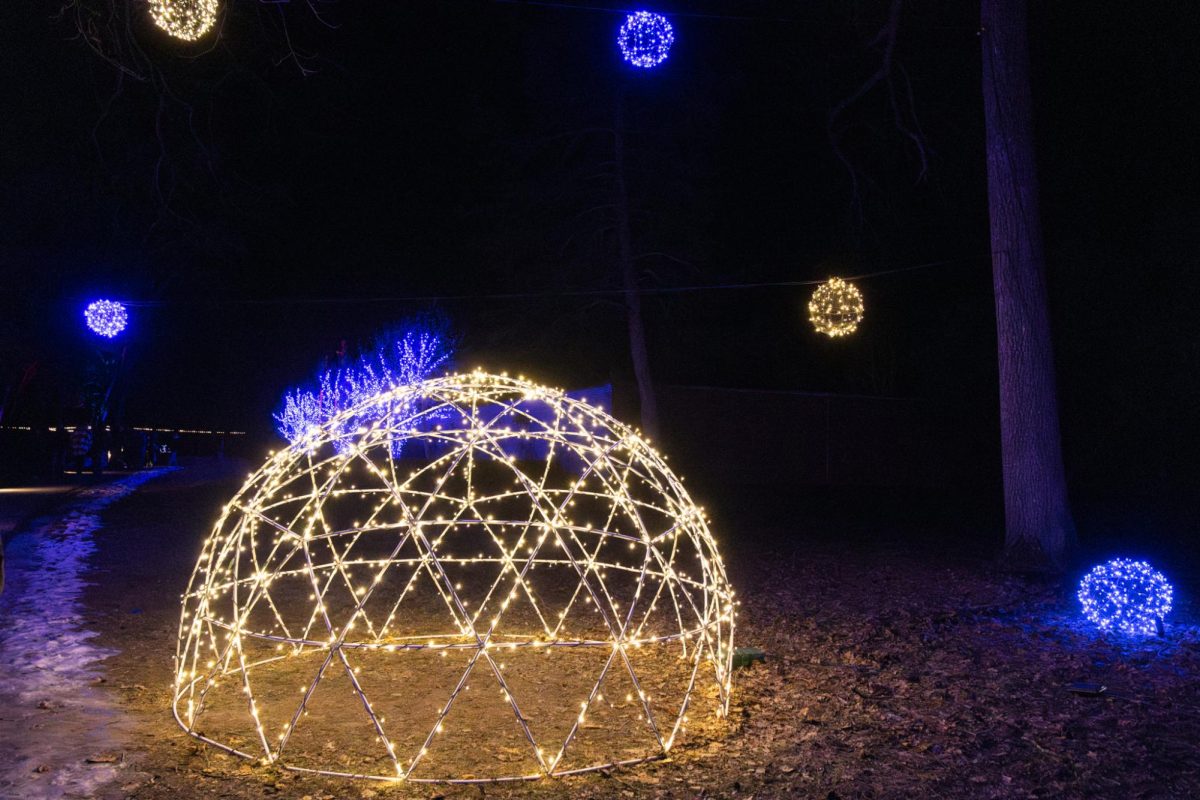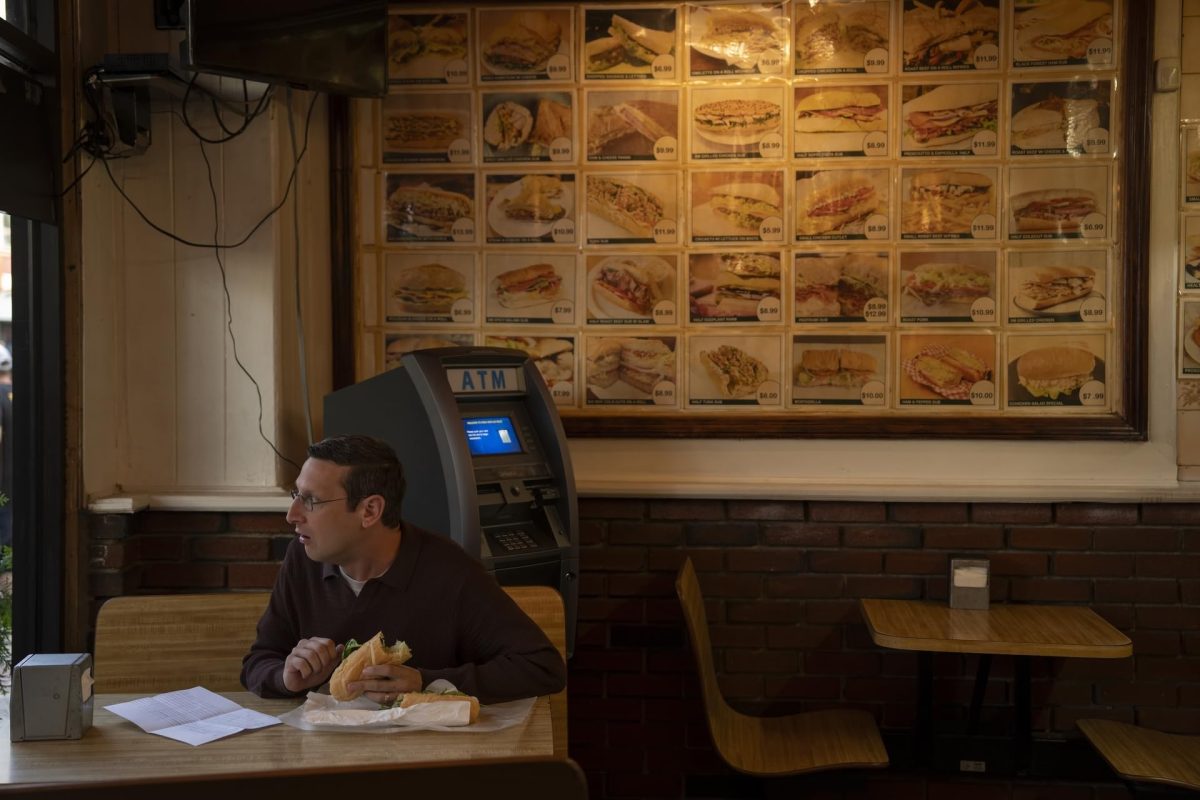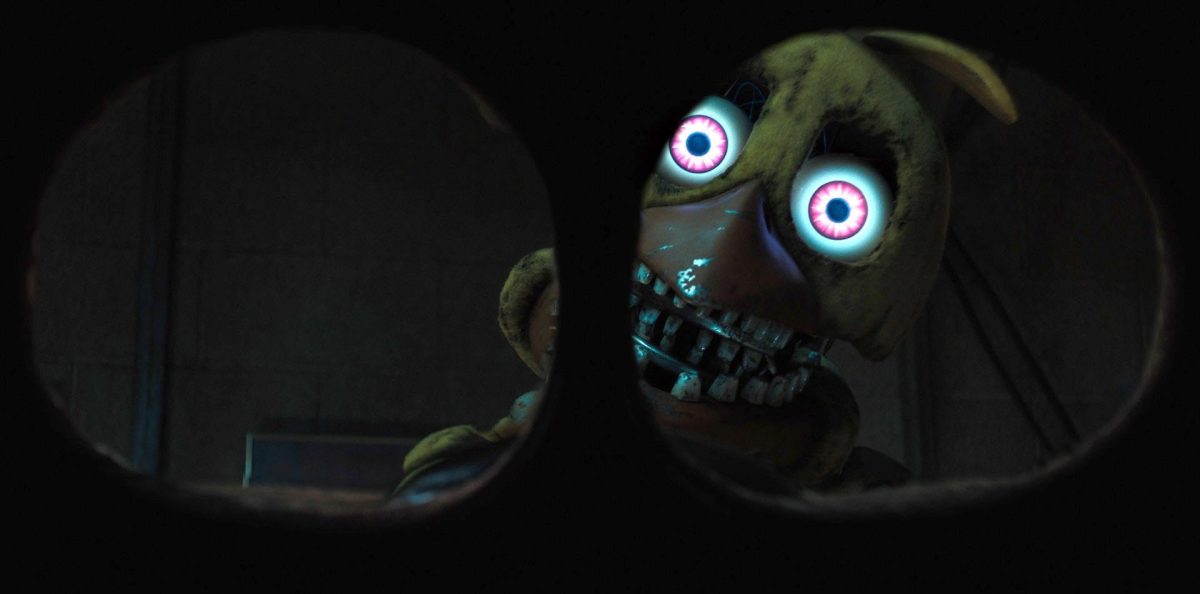**This review contains spoilers.**
The iconic stop-motion film “Coraline,” written, directed and produced by Henry Selick, turns 15 years old today. The film is based on the 2002 book of the same name by Neil Gaiman.
The film focuses on the many worlds of Coraline Jones (Dakota Fanning) and the fantastical characters of both her mundane reality and enthralling fantasy worlds.
Coraline has just moved to a historical house called the Pink Palace far away from her home in Michigan and finds her new setting to be dull.
Her parents, occupied by writing their new gardening catalog, gruffly dismiss their child, which leads her to explore the property in her free time. She eventually finds a pocket dimension called the Other World, where her Other Parents attend to her every want and need with whimsicality.
Get The Daily Illini in your inbox!
In both worlds, she meets her colorful neighbors like Wybie, an awkward and curious little boy; Mr. Bobinsky, a flexible retired carnie; and two posh retired opera actresses, Ms. Spink and Ms. Forcible, who both own a fleet of Scottish terriers.
The presence of these lively characters enhances the worlds we are thrown into. For example, in Coraline’s reality, Mr. Bobinsky is a hairy, large-gutted acrobatic man with cool-toned skin and a mustache akin to a pair of whiskers.
In the Other World, shaped by Coraline’s fantasies, Other Mr. Bobinsky is spritely, wearing a gold-detailed trench coat with shoulder epaulets and a top hat, and is always accompanied by a ring of jumping mice.
Coraline is characterized by her naivety, curiosity and childlike ignorance. This is established in the opening scene, as she wears a Morton Salt girl outfit: a yellow rain jacket paired with muddy yellow rubber rain boots.
The setting design shies away from pure claymation using a multitude of textures like tattered fabrics and synthetic hair, feeding into the motifs of dolls and doll making.
In a scene where Coraline is conducting an exploration of her new home, she jumps upon the bunches in the foot rug. The audience can see the clear contrast between the polished rubber boots and the matted carpet.
The film builds two worlds: a reality that is folksy in its own right, but colored in drabber tones than the vivid Other World. In the Other World, everything is bright, wondrous and fitted to Coraline’s desires.
Her Other Parents have time to garden and cultivate a technicolor backyard with bright snapping dragons and golden hummingbirds, eventually revealing that, from an aerial view, the flowers are shaped in Coraline’s image.
While some images are breathtaking, others are disconcerting. All of the Other World characters have buttons for eyes. Coraline realizes that the dimension is a trap when her Other Mother announces she must give up her eyes to stay.
Some argue that these images are intense for children’s media, but these uncomfortable visuals treat the audience with respect. Using the eerie sights of buttons, the film teaches children that things aren’t always as they seem. Coraline perceived her real parents as dismissive, but in actuality, they were stressed about making ends meet, trying to finish their book to provide for their daughter.
The film was highly acclaimed upon release and remains prevalent in the minds of Millennials and Gen Z, resulting in trends inspired by the music, stills and characters of “Coraline” in recent years. On TikTok alone, there are 556,000 posts under the hashtag #coraline.
“Coraline” sets the bar high for children’s media, showing that we can present seemingly adult images and complicated themes if we approach children through a familiar and playful lens. The film presents worlds made with tactful artistry, eternal images and endearing characters that stand the test of time.









